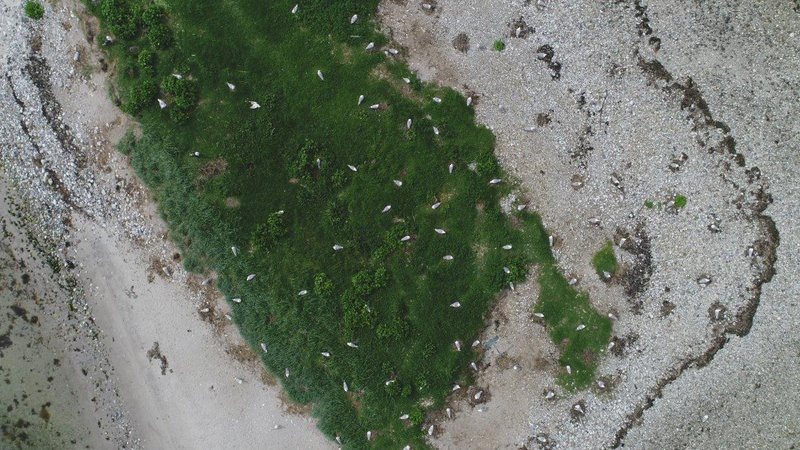Drones in Wadden Sea breeding bird monitoring

Almost 25 participants from the Netherlands, Germany and Denmark met at Groningen University on 7-8 March to exchange information on the application of Unmanned Aerial Vehicles (UAV), or drones, as a new method in counts of coastal bird colonies. The workshop was organised by the Joint Monitoring Breeding Bird (JMBB) Goup and the Common Wadden Sea Secretariat and hosted by Groningen University. It was one of the so-called Quality Assurance Meetings (QAM), which look back on a long tradition in the trilateral breeding bird monitoring. The meetings are intended to check and validate existing census methods.
Presentations from all countries illustrated the very dynamic development of drones and their potential in monitoring the number of breeding pairs and eventually also breeding success (as was shown for Sandwich Tern on the island of Texel). Both the presentations during the workshop and a review of existing literature revealed that drones often are capable of carrying out high-quality counts within a short time period. The discussions covered aspects such as suitable types of drones, flight altitudes, recording techniques and legislative issues, but also minimizing disturbance for breeding and roosting birds. The experts also discussed the precision of the new method compared to traditional counting methods and the need to have both methods carried out simultaneously, at least in the first years of using drones. They concluded that especially in the present initial phase of the use of drones, standards in monitoring methods, data handling and assessment urgently need to be developed and experimental studies need to be undertaken to gain insights into possible disturbance. Only with Wadden Sea-wide monitoring guidelines for the use of drones will the new approach deliver consistent, comparable and harmonized information on the status of birds and habitats in the future.
The workshop report will be published in spring 2018.
